When you attempt to find a balance between the cost, portability, audio and video quality, and also deal with many choices, it can be quite confusing and overwhelming to pick the right vlogging camera. If you have just begun and require a simple one to operate or if you are an aspiring pro who wants advanced 4K features, the camera that most accurately represents your needs is very important.
The purpose of this post is to assist you in limiting the choices and identifying a suitable vlogging camera for your requirements in 2025.
How we tested
Our suggestions stem from practical, real-world experiments that aim to reflect everyday vlogging scenarios. We assess each camera's capability by taking samples indoors and outdoors under various lighting conditions, in addition to recording while moving and talking to evaluate video stabilization alongside battery life and other parameters. In the end, we verify the smartphone app connection to see if there is uninterrupted remote control and easy file transfers, thus making the vlogging experience as comfortable as possible.
Our main objective in 2025 was to find the best vlogging cameras that had the following essential features: very good night performance for 4K or 1080p videos of high quality, clear sound from both built-in and external mics, lightweight with long battery life, flip screen, and safe stabilization, the price at a reasonable level, and easy regulations for beginners.
Vlogging Camera Comparison Chart
| Camera | Type | Resolution | Flip Screen | Best For |
| Sony ZV-1 II | Compact | 4K/30p, 1080p/120p | Yes | Best overall for portability & quality |
| Canon PowerShot G7 X Mark III | Compact | 4K/30p, 1080p/120p | Yes (flip-up) | Budget-friendly vlogging |
| DJI Osmo Pocket 3 | Pocket gimbal camera | 4K/120p, 1080p/240p | Rotatable OLED | Travel & cinematic handheld shots |
| Sony ZV-E10 | Mirrorless (APS-C) | 4K/30p, 1080p/120p | Yes (vari-angle) | Lens versatility & creative control |
| GoPro HERO12 Black | Action cam | 5.3K/60p, 4K/120p | Front screen | Extreme sports & POV content |
| Panasonic Lumix G100 | Mirrorless (Micro Four Thirds) | 4K/30p, 1080p/120p | Yes | Lightweight mirrorless vlogging |
| Fujifilm X-S20 | Mirrorless (APS-C) | 6.2K open gate, 4K/60p | Yes (vari-angle) | Hybrid creators (photo & video) |
| Nikon Z30 | Mirrorless (APS-C) | 4K/30p, 1080p/120p | Yes (vari-angle) | Beginner vloggers & YouTubers |
| Insta360 Go 3 | Ultra-portable action cam | 2.7K/30p, 1080p/120p | Front display | Everyday carry & quick shots |
| Canon EOS R50 | Mirrorless (APS-C) | 4K/30p oversampled | Yes (vari-angle) | Entry-level RF mount vloggers |
|
Show More
Show Less
|
||||
Our Top 3 Camera Picks
A snapshot of our highest-rated cameras for different needs:
Top 10 Cameras for Video Blogging
1. Sony ZV-1 II
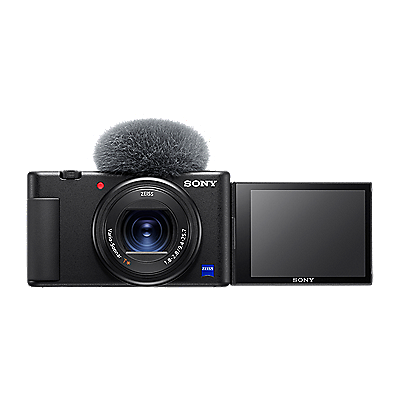
- Fantastic autofocus with up to 315 phase-detection points
- For a compact camera, it has good low-light performance
- Vlog-centric and user-friendly features such as Bokeh switch and Product Showcase setting
- Battery life is middle, it can provide continuous recording for about 45 minutes
- No built-in viewfinder (LCD only)
- Flexible 18-50mm covering wide-angle zoom lens designed for vlogging that can handle a variety of scenes
- Microphone 3-capsule, intelligent built-in, with windscreen included, for clear audio recording
- 3-inch fully articulating screen with 176° flip-out makes framing selfies effortless
- Electronic image stabilization (Active Mode) helps you to get smooth video while recording handheld
Mid-range (~$800-$900)
Beginner to intermediate vloggers
The Sony ZV-1 II is very lightweight with a weight of only 292 grams and is also almost the same size as a large smartphone. It is extremely portable and weighs less than half a kilo.
This camera can record real video for 45 minutes per charge and you can also use USB-C power banks for a longer time if you are on the move.
The Sony ZV-1 II is the perfect example of a camera that delivers excellent image quality and is lightweight.
2. Canon PowerShot G7 X Mark III
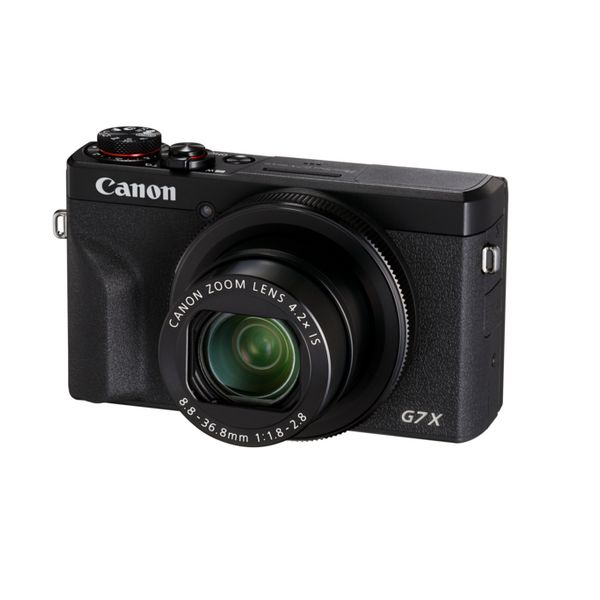
- Fast and accurate face detection autofocus.
- Compact and pocket-friendly design ideal for travel and remote shooting.
- Excellent 4K video quality with minimal crop.
- Vertical video mode perfect for social media content.
- Battery life is average, around 1 hour of continuous video recording.
- 4.2x optical zoom lens (24-100mm f/1.8-2.8) with OIS.
- 4K UHD video at 30p and Full HD up to 120p for slow-motion.
- Live streaming support directly to YouTube with EOS Webcam Utility.
- Fully articulated 3-inch touchscreen for easy framing and vertical video support.
Mid-range (~$850)
Vloggers and content creators hunting for a compact camera
Weighing just about 304 grams, the G7 X Mark III is highly portable.
The Canon PowerShot G7 X Mark III provides about 1 hour of non-stop video recording with each charge, and it had Wi-Fi and Bluetooth turned off which helped it save battery during the recording of long videos.
The Canon PowerShot G7 X Mark III is known as a favorite among the vlogging community for being a perfect combination of a compact, easy-to-use camera that hides a lot of powerful features.
3. DJI Osmo Pocket 3 (Portability)
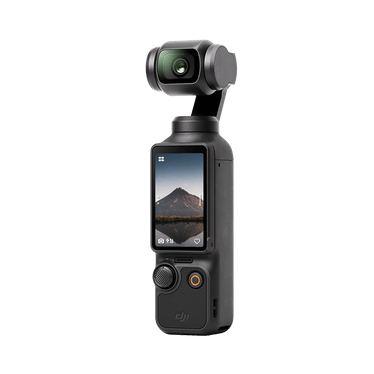
- Best-in-class stabilization for handheld shots
- Pocket-sized with professional-level image and video quality
- Versatile shooting modes including vertical video and slow motion
- No built-in storage — requires microSD card
- 3-axis mechanical gimbal stabilization for ultra-smooth footage
- 2-inch full-color rotatable OLED touchscreen with 556×314 resolution
- Full-pixel fast autofocus and ActiveTrack 6.0 with face auto-detect and dynamic framing
- 10-bit D-Log M and HLG for professional-grade color and HDR video
US $799
Travelers, vloggers, and creators who require ultra-portable, stabilized 4K video.
The Osmo Pocket 3 is a super tiny and lightweight (179g) perfect for users who want high quality without the inconvenience of weight.
It supports up to 166 mins duration at 1080p/24f rate, and very quick recharge—80% in a mere 16 minutes if using PD charger (not included in the set).
The DJI Osmo Pocket 3 is an ultraportable device that does not compromise on image quality and stabilization.
4. Sony ZV-E10 (Interchangeable lenses)
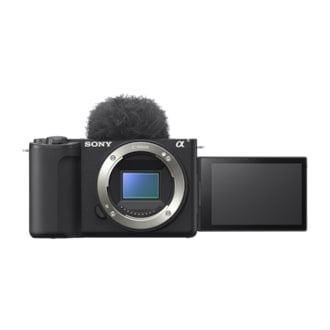
- Outstanding image, and video quality for the money
- Real-time Eye AF for humans and animals improves focus tracking
- Good audio quality with directional mic and wind screen
- No built-in image stabilization; depends on lens stabilization
- Big APS-C 24.2 MP Exmor CMOS sensor for detailed, quality photos and videos
- Removable Sony E-mount lenses for creative freedom and different shooting styles
- 4K HDR video recording with continuous autofocus, including Real-time Eye AF for the human and animal (now in movies)
- Fully moving 3-inch touchscreen LCD (921,600 dots) perfect for selfies and monitoring
- Vlogging-centric features such as Product Showcase Setting, Background Defocus (bokeh switch), and easy switching between stills and movies
US $650 - 850
Vloggers, content creators, and photographers who are in need of a lightweight and portable camera.
It only weighs 343 grams (12.1 ounces) which is almost the same as the weight of an apple, making it super easy to carry for daily vlogging or travel.
It gives you roughly 440 pictures per charge for stills and besides that, it also allows you to record 4K video continuously for about 80 minutes (CIPA standards). Also, it is USB power compatible so you can have longer usage.
The Sony ZV-E10 is an option that goes the distance as it is very good at traveling and has quality of the image as well as creative possibilities and still it is very lightweight.
5. GoPro Hero 12 Black (Action vlogging)
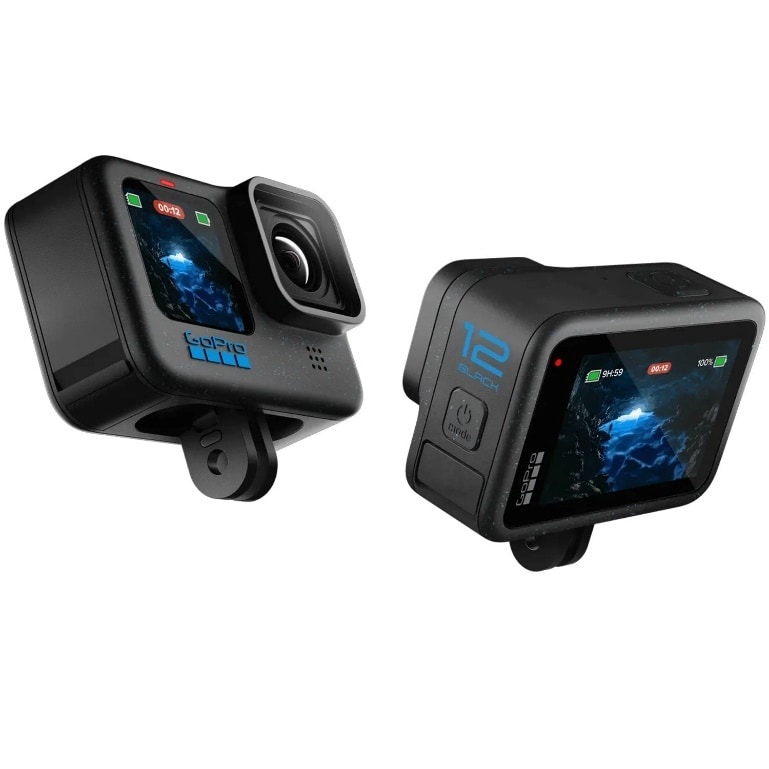
- Industry-leading video stabilization for smooth, professional footage
- Extremely high video resolutions with slow-motion capability
- Creator Edition Kit offers a comprehensive package with audio and lighting solutions
- Wireless audio support and advanced sound controls
- Creator Edition system (with Mod accessories) not fully
- Pro-level 5.3K60 and 4K120 video resolution for ultra-sharp, detailed footage
- HDR photo and video capture for rich dynamic range and color accuracy
- Extended battery life: over 5 hours of 4K30 recording with included Enduro rechargeable battery and Volta Battery Grip
- Compact, durable, and waterproof design (camera alone; full Creator Edition system not waterproof)
US $279
Flying high adrenaline junkies, vloggers, and creators who need a rugged, all-in-one action camera.
The GoPro Hero 12 Black is very small and light (approx. 154 g / 5.6 oz) and that makes it very easy to take any trip.
Thanks to the Enduro battery and Volta Battery Grip that come with you, you can record 4K30 for more than 5 hours on one charge.
GoPro Hero 12 Black Creator Edition is the action vlogging system for the creators who need only the best of the best: very efficient stabilization, professional audio, and lighting—all in a small and sturdy box.
6. Panasonic Lumix G100 (Lightweight mirrorless)
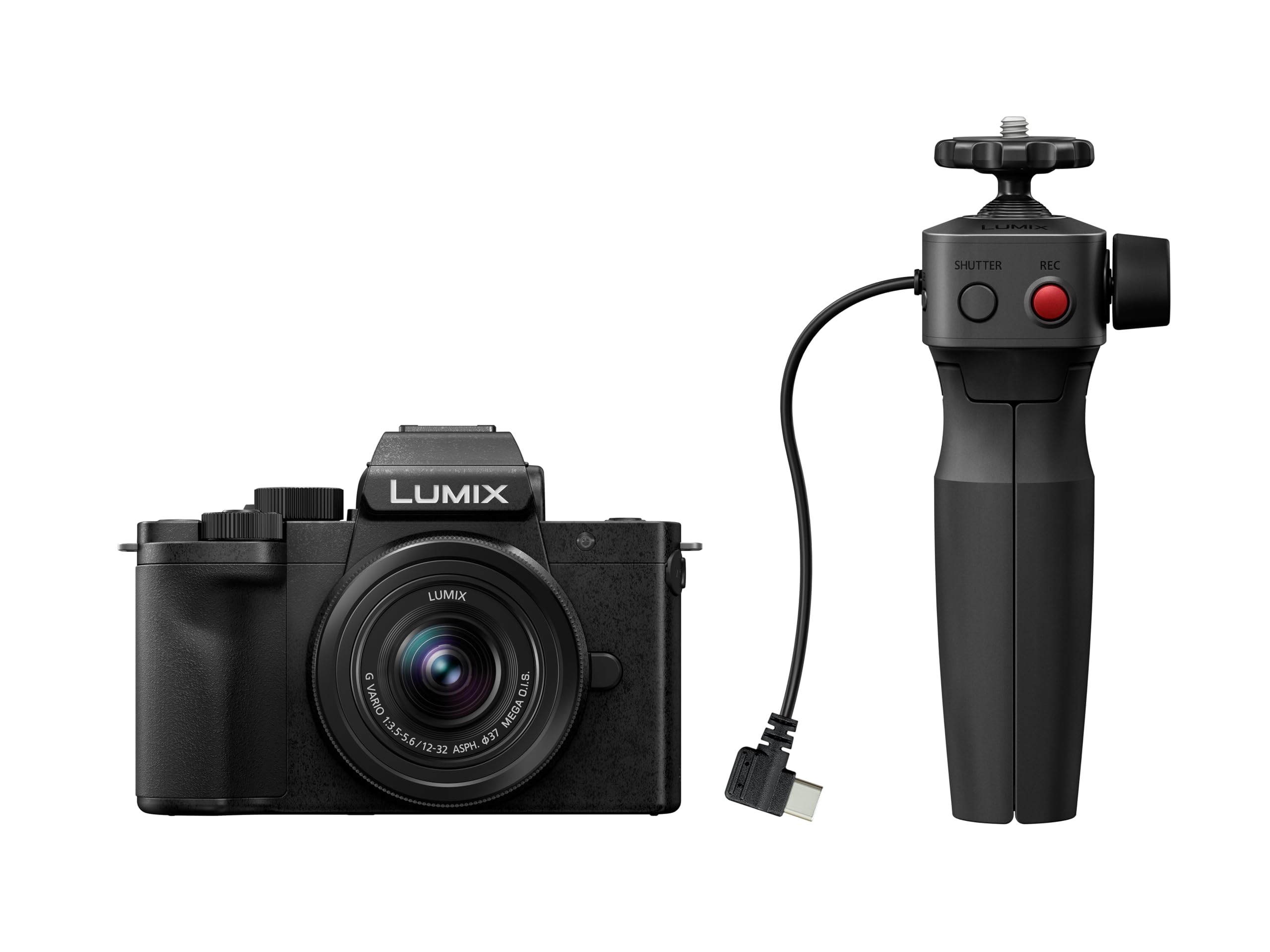
- Lightweight and compact—ideal for travel and on-the-go vlogging
- Excellent audio capture without the need for external microphones
- Solid 4K video quality with good image stabilization for handheld shooting
- Fully articulating screen great for selfies and varied angles
- Convenient smartphone connectivity for quick sharing
- Battery life is moderate—may need extra batteries for longer shoots
- 5-Axis HYBRID I.S makes video smooth during handheld operation—4-axis stabilization in 4K video
- 1,840k-dot free-angle LCD touchscreen that flips 180°—ideal for selfie video and vlog framing
- 3,680k-dot equivalent electronic viewfinder for crisp composition in bright environments
US $749 - 799
Vloggers, content creators, and travelers
345 g (body only)
The battery life is enough to shoot moderate sessions of use. To avoid interruptions during longer sessions, bring along extra batteries.
Panasonic Lumix G100 is a mirrorless camera for vloggers and content creators who are not only looking for portability but also want the best image and sound quality.
7. Fujifilm X-S20 (Hybrid photo/video)
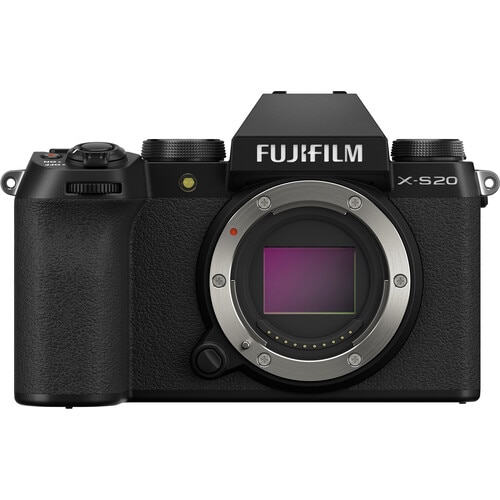
- Strong autofocus powered by deep-learning AI subject detection most suitable for a variety of scenes
- Excellent in-body image stabilization for calm handheld photos and video
- Very high-quality video specifications including 6.2K internal recording and RAW HDMI output
- Heavier than some entry-level mirrorless cameras at 491 g
- 26.1MP back-illuminated X-Trans CMOS 4 sensor for high resolution and low noise without Fujifilm’s unique filter array that eliminates moiré and false colors
- X-Processor 5 with AI-powered subject detection AF enabling human, animal, bird, vehicle, drone, insect, and more detection for reliable tracking
- Five-axis In-Body Image Stabilization (IBIS) that can compensate for shake up to 7 stops during handheld shooting in low light and video
- Vlog Mode with simple touchscreen operation and Product Priority mode allowing smooth focus changes in unboxing or product videos
- 6.2K/30p 4:2:2 10-bit internal video recording aside from 4K/60p and 1080/240p slow-motion capture
US $1499
Hybrid shooters, vloggers, and content creators
Although the X-S20 is small and light to carry, its weight of 491 g corresponds to its professional features.
NP-W235 battery with high capacity offers very good endurance and is rated at 750 shots per charge in normal use and 800 shots in economy mode, which is perfect for all-day shooting.
The Fujifilm X-S20 is a powerhouse of a mirrorless hybrid camera perfect for content creators who need top-notch video features, amazing autofocus, and pro audio without carrying heavy gear.
8. Nikon Z30 (Beginner-friendly)
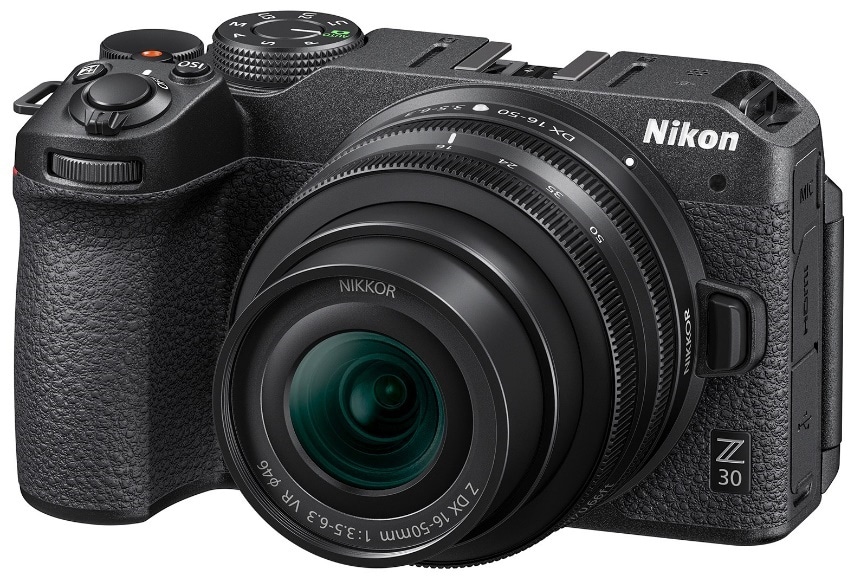
- The design is very light and travel-friendly
- The interface is friendly and the
- Fantastic battery life and USB charging capabilities
- There is no image stabilization
- A fully movable vari-angle touchscreen LCD is great to use for vlogging, taking selfies, and framing your photos creatively
- 4K UHD video at 30p and Full HD video of up to 120fps which can give you a very smooth slow-motion effect
- Use of external microphones through 3.5mm jack for the best recording of the sound
US $610
Vloggers, social media creators, and beginners
Weighs only 350 g.
Acceptable battery life supporting approximately 320 shots per charge (normal usage), additionally USB power enables longer usage with power bank.
The Nikon Z30 is the perfect mirrorless camera for vloggers and casual creators who want excellent image and video quality in a small and light package.
9. Insta360 Go 3 (Ultra-portable)
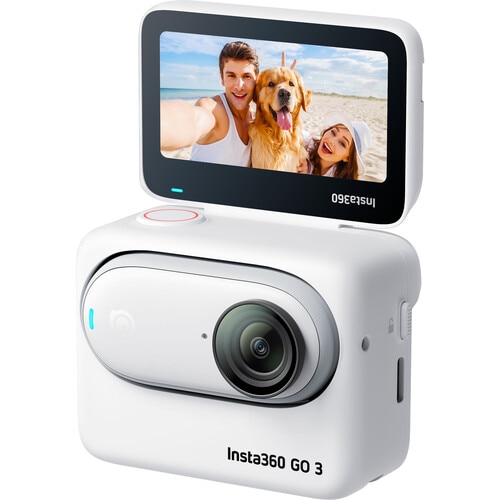
- Professional-level stabilization for very smooth footage
- Multi-purpose waterproof design and no need for additional housing
- Easy-to-use flip screen and remote control with Action Pod
- Editing by smart AI reduces the time needed for post-production
- Ultra-small and lightweight: just 39 g (GO 3S), pocketable for mount-anywhere flexibility
- 4K video recording (GO 3S) and 2.7K video (GO 3) with enhanced wide-angle MegaView FOV on GO 3S
- Signature FlowState electronic image stabilization with horizon lock for ultra-smooth footage
- Flip touchscreen Action Pod accessory for live preview, framing, and remote control
- Waterproof camera body: IPX8 rated (33 ft/10 m for GO 3S, 16 ft/5 m for GO 3) for underwater shots without housing
- Magnetic mounting system with multiple accessories — clip, pendant, pivot stands for creative angles
US $400
Adventurers, vloggers, and social media creators who need a tiny, hands-free camera with top-tier 4K video and FlowState stabilization that is super easy to carry around and install.
Weighing less than 40 grams and of pocket-size, the GO 3 is perhaps the smallest 4K-capable action camera on the market.
About 38 minutes of standalone runtime; after adding the Action Pod dock, the total runtime goes up to 140 minutes, thus enabling longer shots without interruption.
The Insta360 GO 3 is a great device for those who want to have a small, ultra-portable camera, which can deliver a clean, stabilized 4K video and give the users a lot of creative freedom using magnetic mounts and intelligent AI editing.
10. Canon EOS R50 (Entry-level RF mount)

- Excellent image quality with large APS-C sensor and powerful DIGIC X processor
- Reliable and fast autofocus across a wide area of the frame
- Compact, lightweight design perfect for creators on the move
- High-quality 4K video with up to 1 hour continuous recording per clip
- Burst shooting speed slower than a few rivals (max 15fps)
- 24.2MP APS-C CMOS sensor providing crisp images and creating professional depth of field effects
- UHD 4K 30p video resampled from 6K for superior detail and clarity
- Dual Pixel CMOS AF II with 651 autofocus zones for quick and accurate subject tracking
- Continuous shooting up to 12fps (mechanical shutter) and 15fps (silent electronic shutter) for capturing fast action
Mid-range
Content creators, vloggers, and photographers needing a light, powerful camera offering great 4K video and simple connection to social media for the camera of choice.
Weighing only 375 grams along with a natural ergonomic grip, the EOS R50 is very portable and user-friendly, made for creators to take it anywhere.
It is suitable for long shooting sessions with efficient battery consumption and can hold a standard SD card. The video shooting is restricted to around 45 minutes at 4K 30p due to heat management.
The Canon EOS R50 mixes great APS-C image quality, accurate autofocus, and strong 4K video features in a small and fashionable body that is ideal for creators who only want one camera to improve social media, vlogging, and photography without being heavy.
Join the conversation and make your choice count! 🔥
Essential Editing Tool for Vloggers
Wondershare Filmora - AI-Powered Post-Production
Best For: Beginners & pros seeking efficiency (auto-correction, social templates).
In the world of vlogging, recording is just one part of the equation — the other is turning that unedited material into something interesting, smooth, and good for your fans. Wondershare Filmora 14 helps you save a lot of time with its AI-driven editing suite. Filmora is like a great assistant for vloggers; it takes care of the tech chores so they can concentrate on being creative and telling their stories.
Additionally, creators get the advantage of planar tracking for accurate motion effects, auto reframing for different platforms, as well as a stock of over 10 million assets, such as templates, effects, and music without royalty.
Key features for vloggers:
- AI Video Enhancer – One-click clarity boost, color correction, and 4K upscaling for professional-looking footage.
- Smart Short Clips – Automatically detects highlights in long videos and turns them into social media-ready vertical clips with music and subtitles.
- AI Copywriting & AI Mate – Generate video scripts, titles, and descriptions with ChatGPT-powered tools, plus real-time editing guidance.
- Multi-Camera Editing – Sync and switch between different camera angles seamlessly, perfect for travel or interview vlogs.
- AI Portrait Cutout & Smart Masking – Remove or replace backgrounds without green screens for creative effects.
- AI Object Removal & Facial Mosaic – Clean up unwanted elements or blur sensitive areas in footage.
- Dynamic Subtitles – Auto-generate engaging, styled captions for better viewer retention.
- AI Voice Tools – Voice cloning, vocal removal, noise reduction, and lip-sync translation for global reach.
Whether you’re shooting on a compact vlogging camera or a professional mirrorless, post-production is where your footage transforms into a captivating story. With Wondershare Filmora, vloggers can edit quickly and creatively—thanks to an intuitive interface and powerful AI tools. Here’s a simple step-by-step guide to editing your vlogs with Filmora:

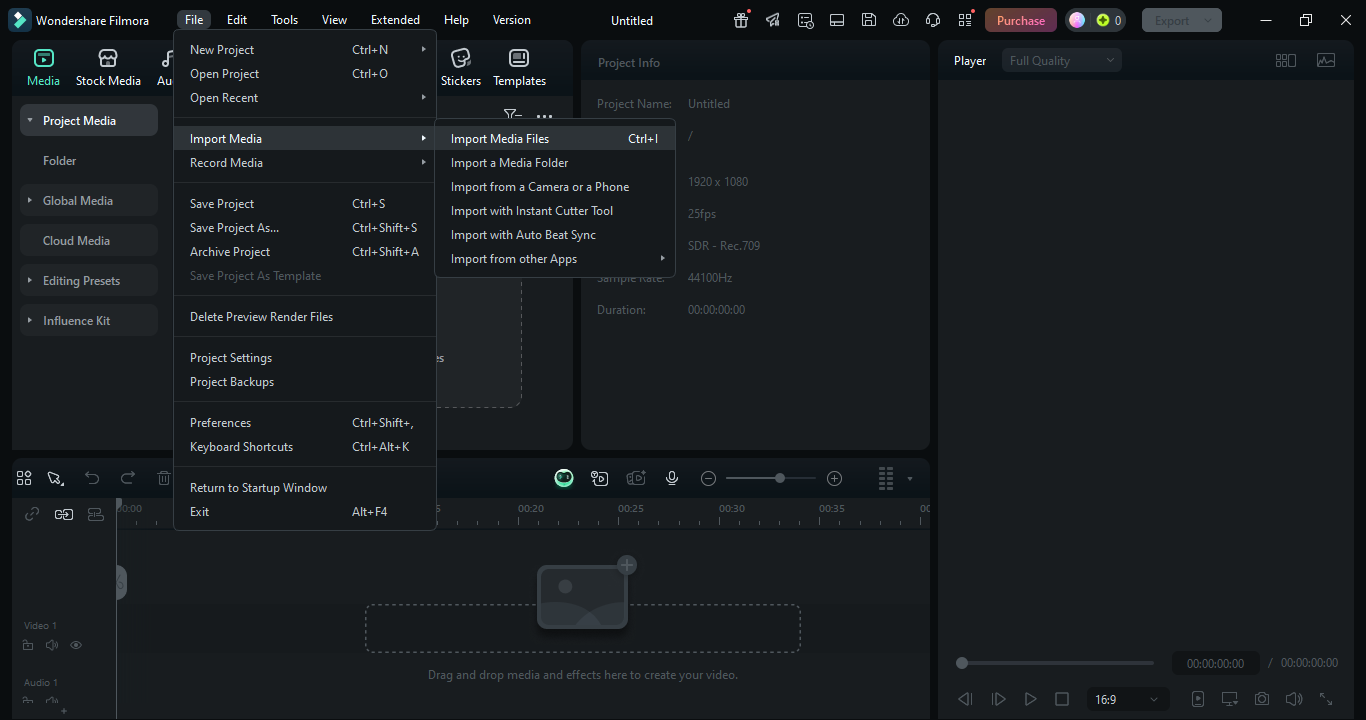
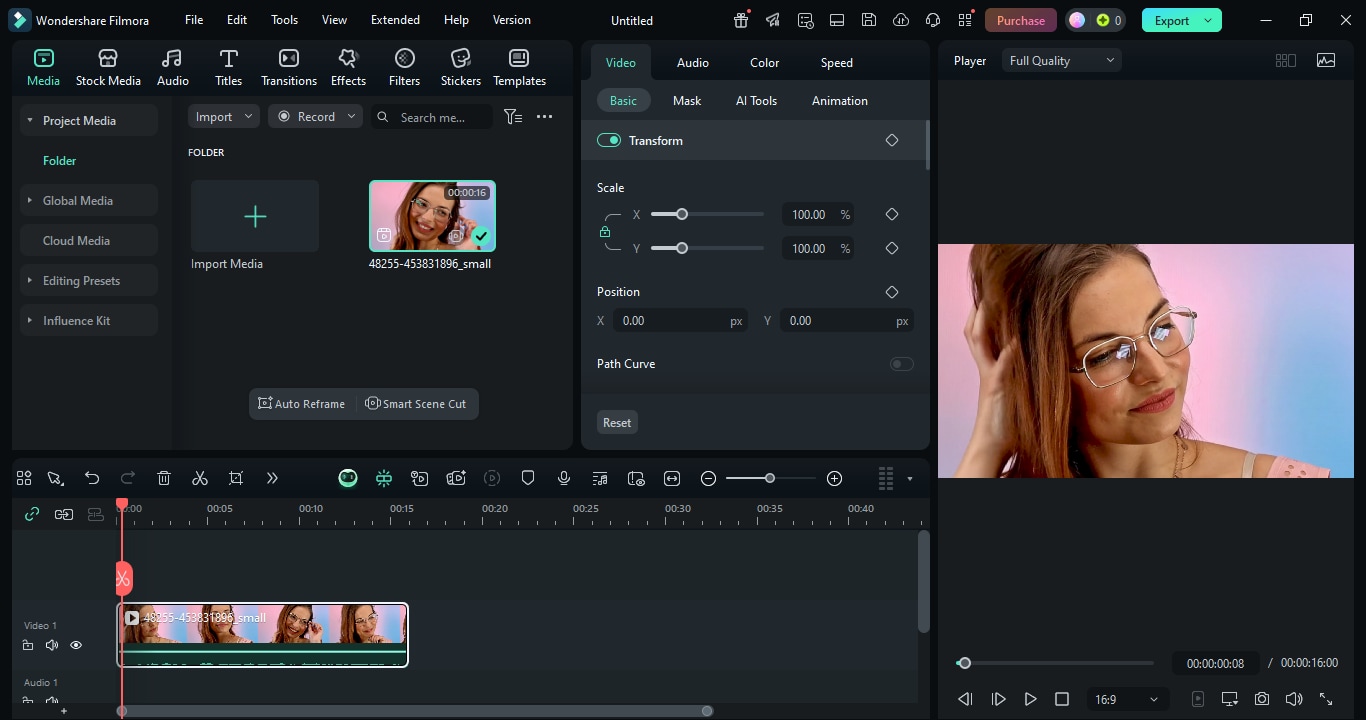
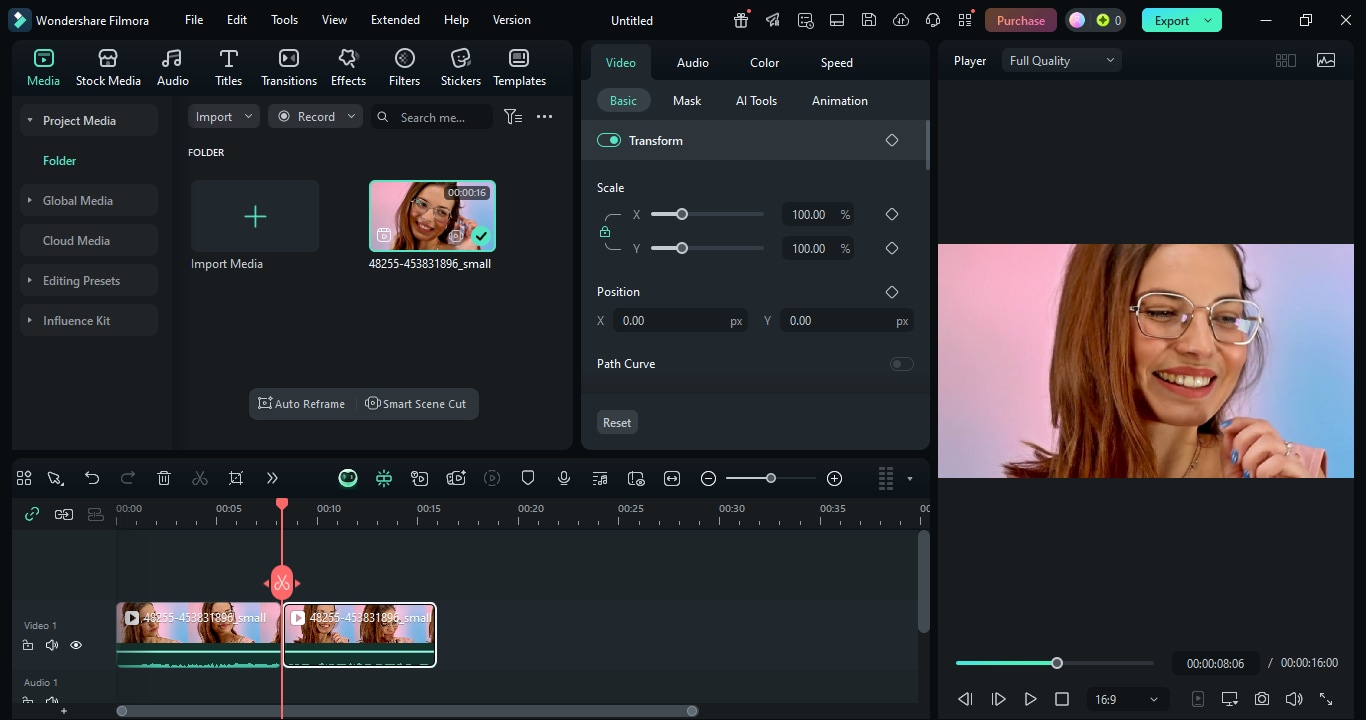
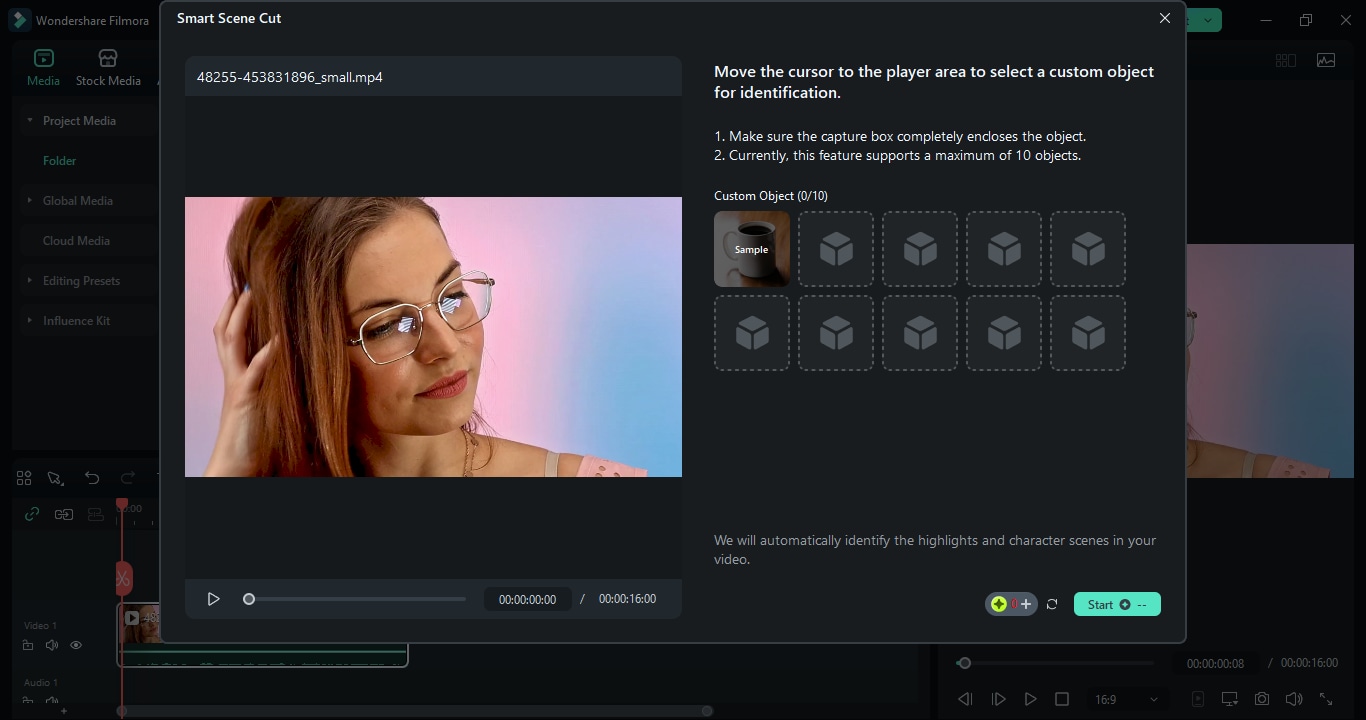
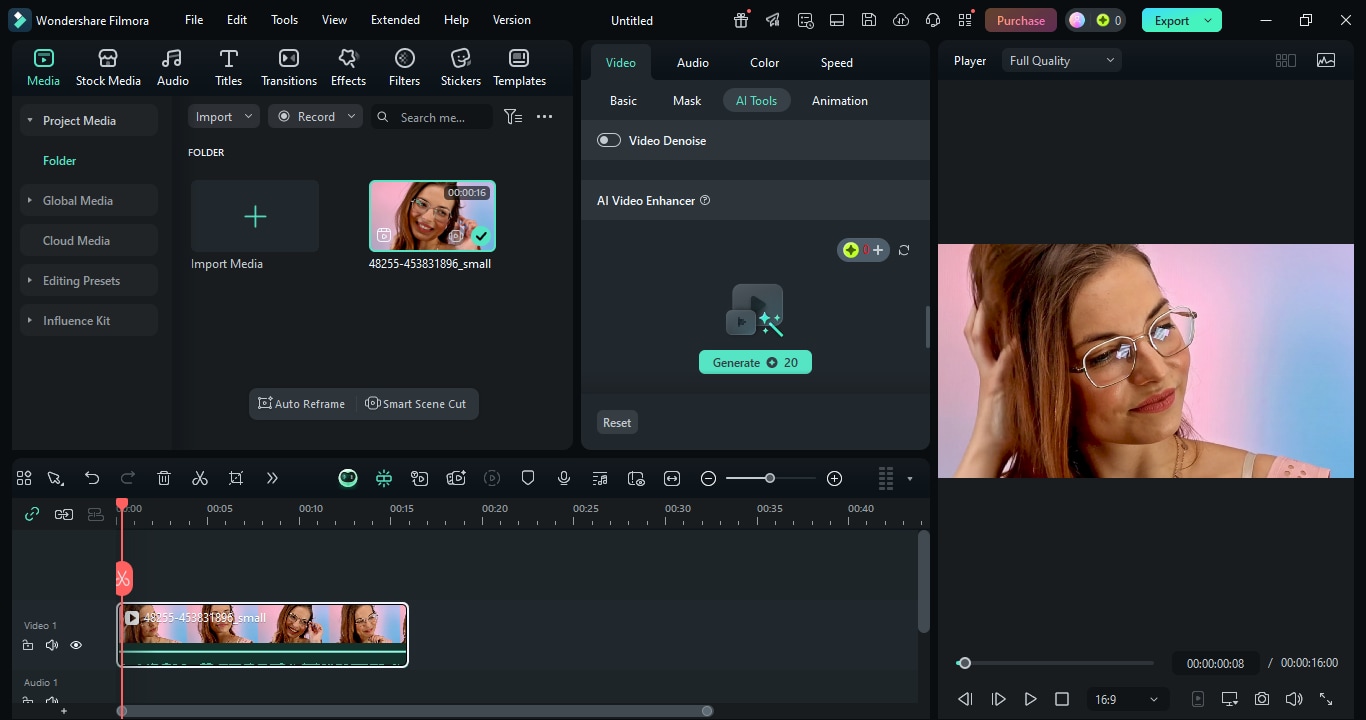
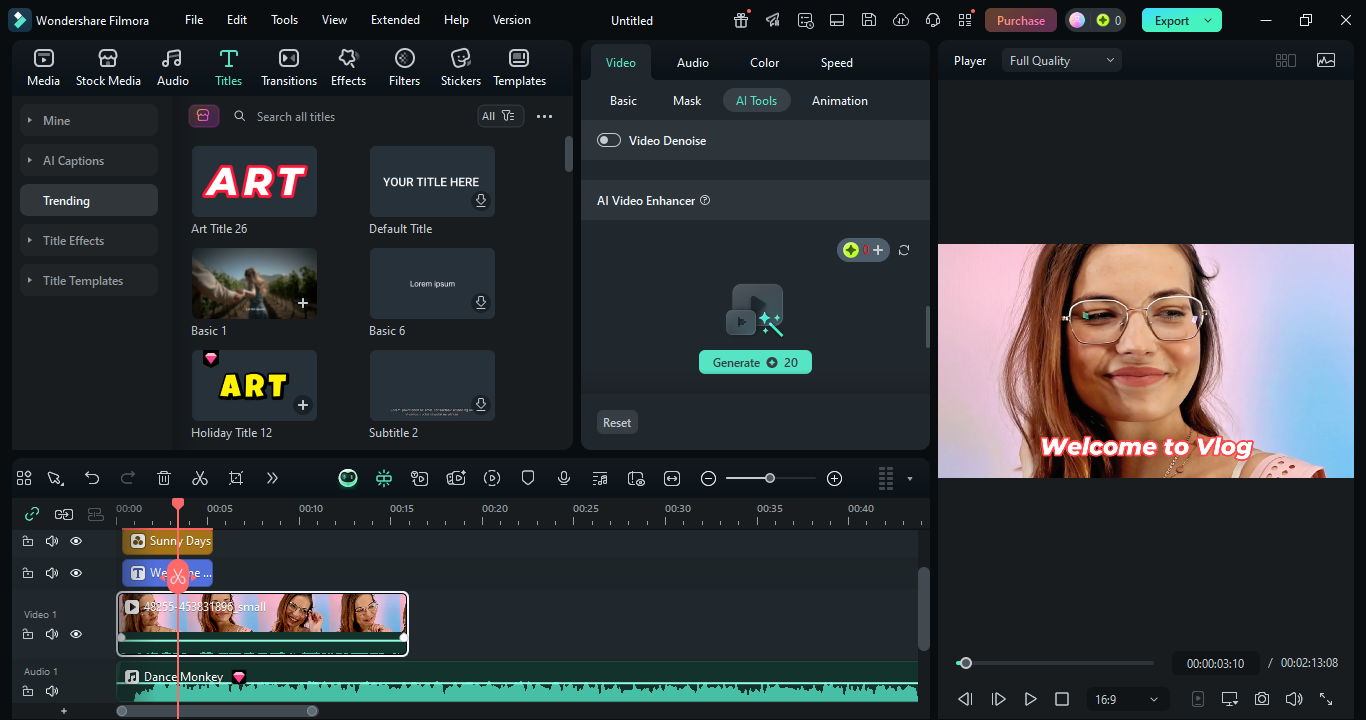
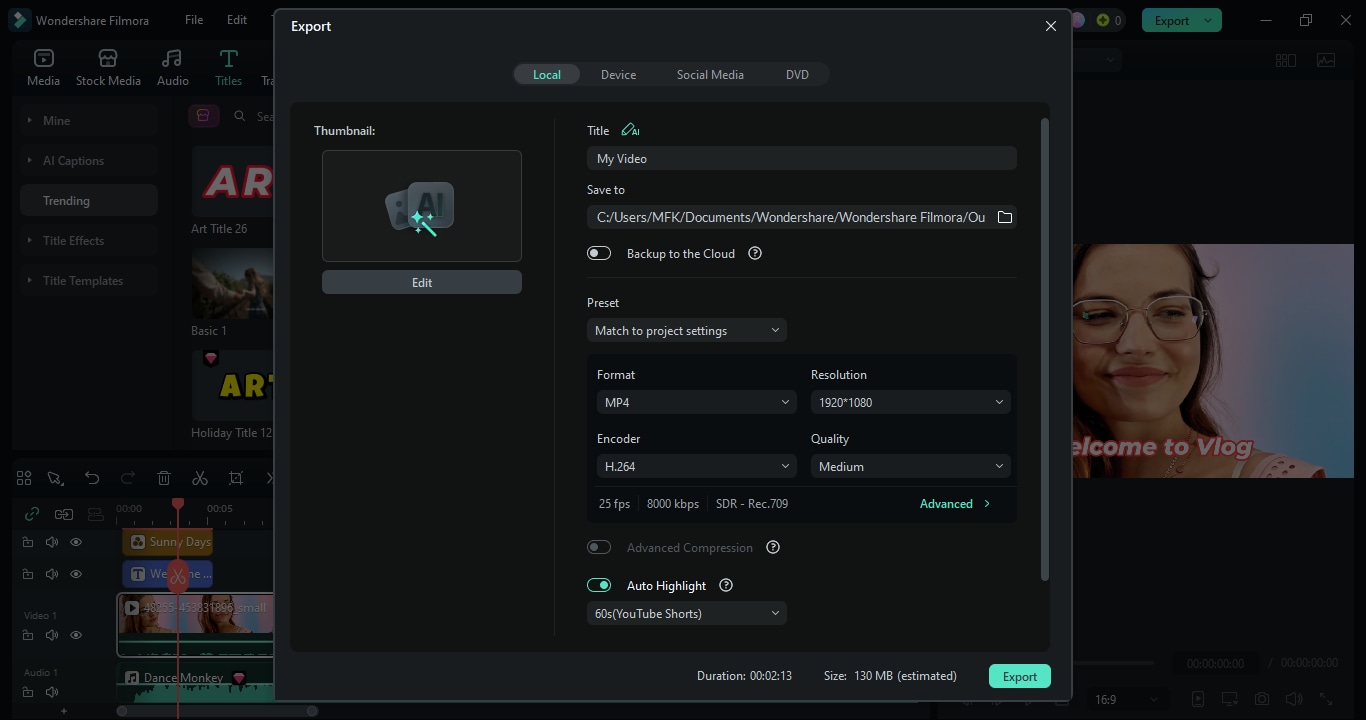
How to Choose a Vlogging Camera
When deciding on a camera for vlogging your pick should be in accordance with your degree of expertise, budget, and the filming technique you employ. The following are some use case-specific recommendations:
- For beginners: One with a flip screen, an auto mode that is reliable, and built-in stabilization for a smooth video, are some of the features you should be looking out for. (Example: Nikon Z30)
- For budget vloggers (under $500): A good option is to go for used or older models that fit your budget or even combine your smartphone with a gimbal. (Example: Sony ZV-1F)
- For travel and outdoor vloggers: During any kind of activity, weather-sealed cameras with a powerful stabilizer will take good care of the job of different environments. (Examples: GoPro Hero 12, DJI Pocket 3)
- For aspiring pros: A camera with that allows one to change lenses and has a 10-bit color depth to produce cinematic effects is the best choice. (Examples: Sony ZV-E10, Fujifilm X-S20)
- Audio matters: Make sure you have access to a camera with a microphone input or wireless audio support
Conclusion
Selecting the ideal vlogging camera is essentially finding a device that fits your requirements, budget, and artistic aims. Simple, easy-to-use models might bring advantages to beginners, while those who want to become professionals can utilize advanced features like interchangeable lenses and 10-bit color. Travel vloggers should concentrate on portability and durability, while budget-conscious creators can get more from using older models or even smartphones along with stabilization gear. And the importance of good audio should not be underestimated—it can make a big difference for your content. The best camera is the one that allows you to create continuously, confidently, and with your unique style, whether you are just starting a casual YouTube channel or building a professional brand.


